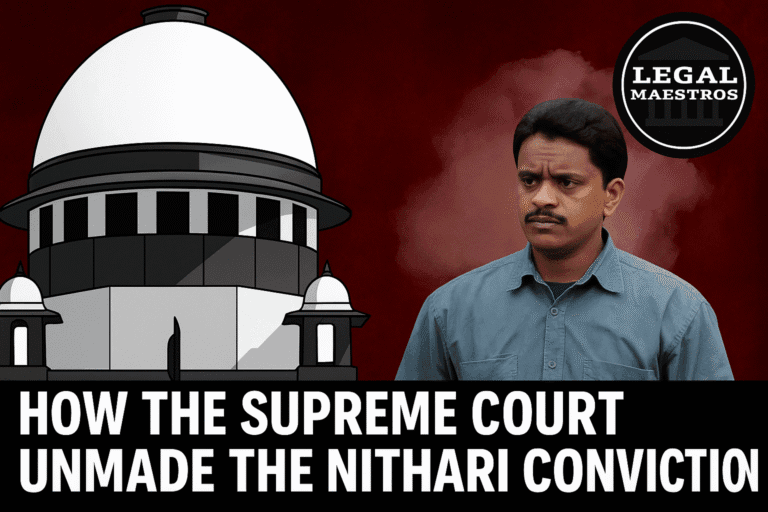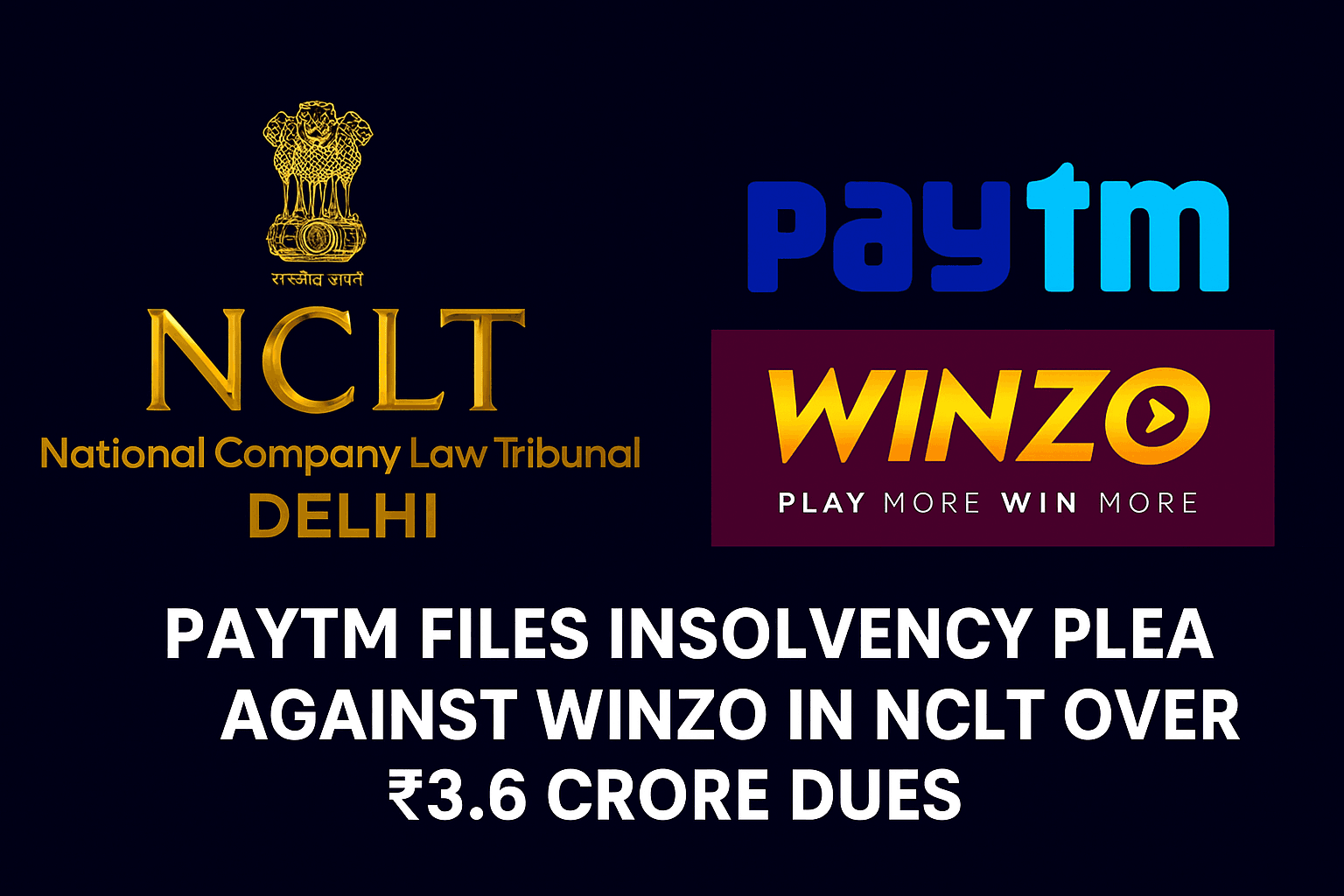
Justice J.B. Pardiwala Condemns Bail for Child Trafficking Accused and Upholds Victims' Rights
Introduction
In a ruling that was delivered on April 15, 2025, the Supreme Court of India, through the Honorable Mr. Justice J.B. Pardiwala, addressed a series of interrelated criminal appeals that were related to a horrible interstate child trafficking racket. The opinion was forceful and carefully researched. In this particular instance, the High Court of Allahabad decided to revoke the bail that had been granted to a number of individuals who were accused of kidnapping and selling underage children for the purpose of adoption and other exploitative activities. The appeals that were submitted by the victims and their families were granted by the Supreme Court, which did so after finding that the High Court had failed to take into account important circumstances when it granted bail. The verdict placed a great emphasis on the rights of children, the gravity of the crimes associated with trafficking, and the inability of the judicial system to properly take preventative measures against such offenses.
The Reality of the Situation
The three primary First Information Reports (FIRs) that were submitted in 2023 were the source of the appeals. An organized network of child traffickers was brought to light by these First Information Reports (FIRs), which were filed in Varanasi, which is located in the state of Uttar Pradesh. The complaints were submitted by parents whose children were kidnapped while they were sleeping on the streets. The inquiry revealed that the children had been stolen and sold over state boundaries, frequently for lakhs of rupees. This was established after the investigation was conducted.
Among other cases, the one that was titled “Pinki v. State of Uttar Pradesh and Another” demonstrated that the accused individuals had abducted a number of children, one of whom was Pinki’s son, who was only one year old, and taken them to distant places like Jharkhand and West Bengal. Eventually, some of the accused were taken into custody, and the children were found safe and sound; however, others either fled the scene or refused to assist with the legal proceedings going on. Even though the charges were extremely serious, the High Court decided to release some of the individuals who were accused on bail. On appeal to the Supreme Court, victims and their families contested the validity of these bail rulings.
For any queries or to publish an article or post or advertisement on our platform, do call at +91 6377460764 or email us at contact@legalmaestros.com.
Provisions of the Law That Were Employed
Sections 363, 311, and 370(5) of the Indian Penal Code were some of the primary topics of discussion in this scenario. The topics of kidnapping, wrongful detention, and trafficking for the purpose of exploitation are discussed in these sections. Trafficking of children is punishable by severe penalties, including life imprisonment, according to Section 370(5) of the Criminal Law (Amendment) Act of 2013, which was passed in 2013.
The verdict also addressed Article 23 of the Constitution of India, which forbids the trafficking of human beings and the use of forced labor. The Supreme Court established a connection between the offenses and the infringement of constitutional rights, particularly the rights of children to life, dignity, and protection from exploitation.
As an additional point of interest, the judgment made reference to international treaties such as the United Nations Convention on the Rights of the Child (1989) and the Hague Convention on Protection of Children and Cooperation in Respect of Inter-country Adoption (1993). These conventions place an emphasis on the necessity of safeguarding children from being abused or exploited, and they mandate that adoptions be carried out in accordance with the law, in an open and honest manner, and with the child’s best interests in mind.
For any queries or to publish an article or post or advertisement on our platform, do call at +91 6377460764 or email us at contact@legalmaestros.com.
Reasoning and analysis employed by the judiciary
Justice Pardiwala began her investigation of the situation by first acknowledging the domestic and international elements of the issue of child trafficking. It was brought to his attention that the accused were a part of a highly structured nationwide network that targeted families that were homeless or living in poverty. The method of operation consisted of stealing youngsters from footpaths and railway stations, changing their identities, and then selling them to childless families or using them for various sorts of exploitation.
The decision of the High Court to issue bail without taking into account the seriousness of the offense and the current state of the inquiry was something that the Court strongly disapproved of. As a result of the fact that many of the accused had fled after being granted bail, the authorities had to work across multiple states in order to bring them back. The Supreme Court expressed its disapproval of the slowness with which charge sheets were filed and the lack of local police enforcement to ensure that court attendance was maintained.
They stressed that providing bail in such significant instances damages public trust in the court system, which is something that the bench emphasized. Specifically, it brought attention to the broad rules that govern the granting of bail, particularly in cases involving offenses that include vulnerable populations such as children. The court made the observation that bail should not be given automatically and that decisions on bail should take into account the likelihood that the accused may run, tamper with evidence, or commit the same offense again.
For any queries or to publish an article or post or advertisement on our platform, do call at +91 6377460764 or email us at contact@legalmaestros.com.
The Legal Structure of India Regarding the Trafficking of Children
The Court provided an overview of India’s developing legal approach to the issue of trafficking. It noted that the definition of trafficking was broadened to include any act of recruiting, transporting, or harboring a person for the purpose of exploiting them via force, dishonesty, or abuse of power as a result of the change that was made to the Indian Penal Code in 2013. Sections 370 and 370A were included as part of this amendment. Additionally, the Court made notice of the fact that the Juvenile Justice (Care and Protection of Children) Act, 2015 sets forth stringent protocols for adoption and child protection, and that these protocols must be adhered to in a stringent manner.
An explanation was provided by Justice Pardiwala that unlawful adoptions, which include the sale of children without the appropriate legal procedures, are a kind of trafficking. He referred to the seminal case of Lakshmi Kant Pandey v. Union of India (1984), which established safeguards for adoptions that take place between countries and issued a warning against the commercialization of child adoption. According to the opinion of the Court, the current case exemplified a criminal misuse of the adoption system, in which children were regarded as commodities.
The problems with law enforcement and the failures of the police
Failures on the part of law enforcement agencies were brought to the attention of the Supreme Court. In spite of the fact that they were given bail, several of the accused did not show up in court, and warrants that were not eligible for bail were disregarded. In many instances, arrests were not carried out until the action of the Supreme Court was taken. It is the opinion of the Court that this permissive approach gives traffickers more confidence and reduces the effectiveness of the law as a deterrence.
For any queries or to publish an article or post or advertisement on our platform, do call at +91 6377460764 or email us at contact@legalmaestros.com.
According to the results of a report that was published by the National Human Rights Commission (NHRC), which exposed serious inadequacies in the implementation of trafficking legislation, the judgment in question cited those findings. According to the findings of the report, children are still victims of human trafficking for the purposes of forced labor, begging, child marriage, and unlawful adoption. Once they have been rescued, many victims may not receive enough psychological, legal, or social care, and they frequently face the possibility of being re-trafficked.
For More Updates & Regular Notes Join Our Whats App Group (https://chat.whatsapp.com/DkucckgAEJbCtXwXr2yIt0) and Telegram Group ( https://t.me/legalmaestroeducators )
The Importance of Demand in the Trafficking of Children
Furthermore, the Court investigated the economic and societal elements that are the driving force behind trafficking. There is a significant demand for adoptable children, particularly among couples who do not wish to wait for the legal procedures to be completed through CARA (Central Adoption Resource Authority). Those who engage in trafficking take advantage of this desire by establishing a “black market” for youngsters. The Supreme Court issued a warning that in the absence of robust enforcement, even families with good intentions may unintentionally promote unlawful trafficking by participating in adoptions that are not regulated through this process.
For any queries or to publish an article or post or advertisement on our platform, do call at +91 6377460764 or email us at contact@legalmaestros.com.
The failure of the system as a whole and the urgent need for reform
The situation was described as a “systemic failure” in the verdict, which included insufficient cooperation between states, inadequate policing, delays in the legal system, and inadequate application of child protection laws. It was demanded by the Court that immediate reforms be implemented in order to enhance Anti-Human Trafficking Units (AHTUs), improve coordination between states, and guarantee that all instances involving missing children are handled as potential cases of trafficking unless it is proven otherwise.
Further, it suggested that the general public and experts working in the field of child welfare should be more aware of the issue. In order to recognize situations of human trafficking and address them with empathy, judges, prosecutors, and law enforcement personnel need to receive training. The Court emphasized that human trafficking is not just a problem that interferes with law and order, but it is also a significant violation of human rights.
In the case of Pinki v. State of Uttar Pradesh and Others, the judgment that was written by Justice J.B. Pardiwala serves as a powerful reaffirmation of the responsibility that the judiciary has to safeguard the most vulnerable members of society, particularly children. It holds that human trafficking is a serious violation of both the constitution and human rights, and it condemns any form of tolerance that may be shown toward those who are accused of committing such crimes. Not only does the decision revoke the bail of a number of individuals who have been accused, but it also serves as a broader warning against the uncritical attitude of police enforcement and lesser courts.
For any queries or to publish an article or post or advertisement on our platform, do call at +91 6377460764 or email us at contact@legalmaestros.com.





![Research Assistantship @ Sahibnoor Singh Sindhu, [Remote; Stipend of Rs. 7.5k; Dec 2025 & Jan 2026]: Apply by Nov 14, 2025!](https://legalmaestros.com/wp-content/uploads/2025/11/Gemini_Generated_Image_s0k4u6s0k4u6s0k4-768x707.png)
![Karanjawala & Co Hiring Freshers for Legal Counsel [Immediate Joining; Full Time Position in Delhi]: Apply Now!](https://legalmaestros.com/wp-content/uploads/2025/11/Gemini_Generated_Image_52f8mg52f8mg52f8-768x711.png)